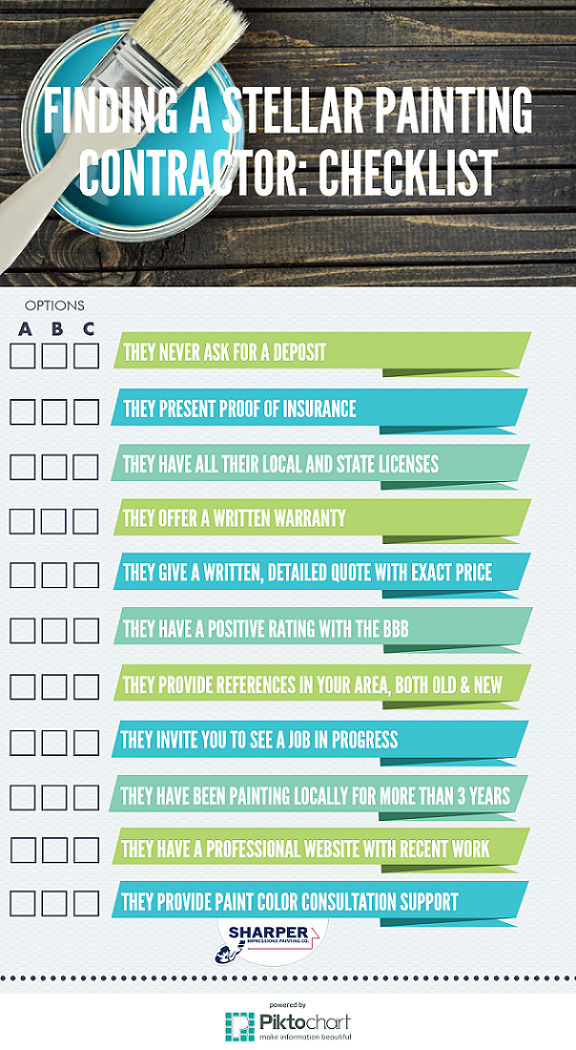The Performance Of Your Industrial External Painting Job Is Very Closely Connected To Climate Condition-- Figure Out How It Can Either Sustain Or Hinder Your Desired Outcomes
The Performance Of Your Industrial External Painting Job Is Very Closely Connected To Climate Condition-- Figure Out How It Can Either Sustain Or Hinder Your Desired Outcomes
Blog Article
Article Developed By-Weiss Kofoed
When you're preparing a commercial exterior painting project, don't underestimate the effect of climate on your outcomes. You require to think about variables like temperature level, humidity, and precipitation, as they can make or break your paint job. As an example, did you know that excellent problems call for certain temperature ranges and humidity degrees? Falling short to keep an eye on these facets can result in unequal coatings or even damages to fresh paint. Understanding these elements is vital to accomplishing a durable, expert result. So, what specific weather conditions should you watch out for?
Temperature Considerations
When it concerns industrial exterior paint, temperature plays a vital function in the end result of your task. If you're painting in severe warmth, the paint can dry out too promptly, causing concerns like poor adhesion and uneven surfaces. You intend to aim for temperatures between 50 ° F and 85 ° F for the best outcomes. Below 50 ° F, paint may not heal appropriately, while over 85 ° F, you run the risk of blistering and fracturing.
Timing your job with the ideal temperature levels is necessary. Beginning your work early in the early morning or later on in the mid-day when it's cooler, particularly during warm months.
Additionally, consider the surface area temperature level; it can be dramatically greater than the air temperature level, especially on warm days. Utilize a surface thermometer to inspect this prior to you start.
If temperatures are unpredictable, watch on the weather report. Sudden temperature decreases or warm front can hinder your strategies. You do not intend to start repainting only to have the problems alter mid-project.
Moisture Degrees
Moisture levels dramatically affect the success of your business outside painting task. When https://jaspergmqva.bloggactif.com/34476784/thorough-interest-to-information-and-professional-methods-are-essential-for-understanding-remarkable-paint-touch-ups-find-out-how-to-accomplish-smooth-results is expensive, it can prevent paint drying out and treating, bring about a range of problems like bad bond and finish top quality.
If you're planning a work throughout wet problems, you might locate that the paint takes longer to dry, which can prolong your project timeline and rise costs.
On the other hand, reduced moisture can also present difficulties. Paint may dry as well swiftly, protecting against proper application and causing an unequal surface.
You'll intend to check the humidity levels carefully to guarantee you're working within the perfect range, typically in between 40% and 70%.
To obtain the best results, take into consideration using a hygrometer to gauge humidity prior to starting your project.
If exterior painter tigard or locate the degrees are outside the optimum array, you may require to change your timetable or choose paints developed for variable conditions.
Always get in touch with the producer's standards for particular suggestions on moisture tolerance.
Rainfall Effect
Rain or snow can significantly interrupt your commercial outside painting plans. When precipitation takes place, it can get rid of freshly applied paint or create an uneven finish. Ideally, you wish to choose days with completely dry climate to make sure the paint adheres properly and remedies successfully. If you're captured in a rain shower, it's ideal to halt the job and wait for conditions to improve.
Furthermore, snow can be much more detrimental. Not only does it develop a wet surface, yet it can likewise decrease temperature levels, making it tough for paint to dry. This can cause issues like peeling off or blistering down the line.
It's essential to examine the weather forecast before starting your job. If rain or snow is forecasted, consider rescheduling.
Constantly remember to allow appropriate drying out time between coats, especially if the weather condition continues to be unforeseeable.
Conclusion
To conclude, watching on the weather condition is necessary for a successful industrial exterior painting task. By monitoring temperature, humidity, and precipitation, you can ensure the best problems for application and curing. Bear in mind to prepare your work around favorable climate and constantly follow maker guidelines. With the right strategy, you'll achieve a durable, attractive coating that can withstand the aspects. Do not allow the weather catch you off-guard-- stay informed and paint clever!
